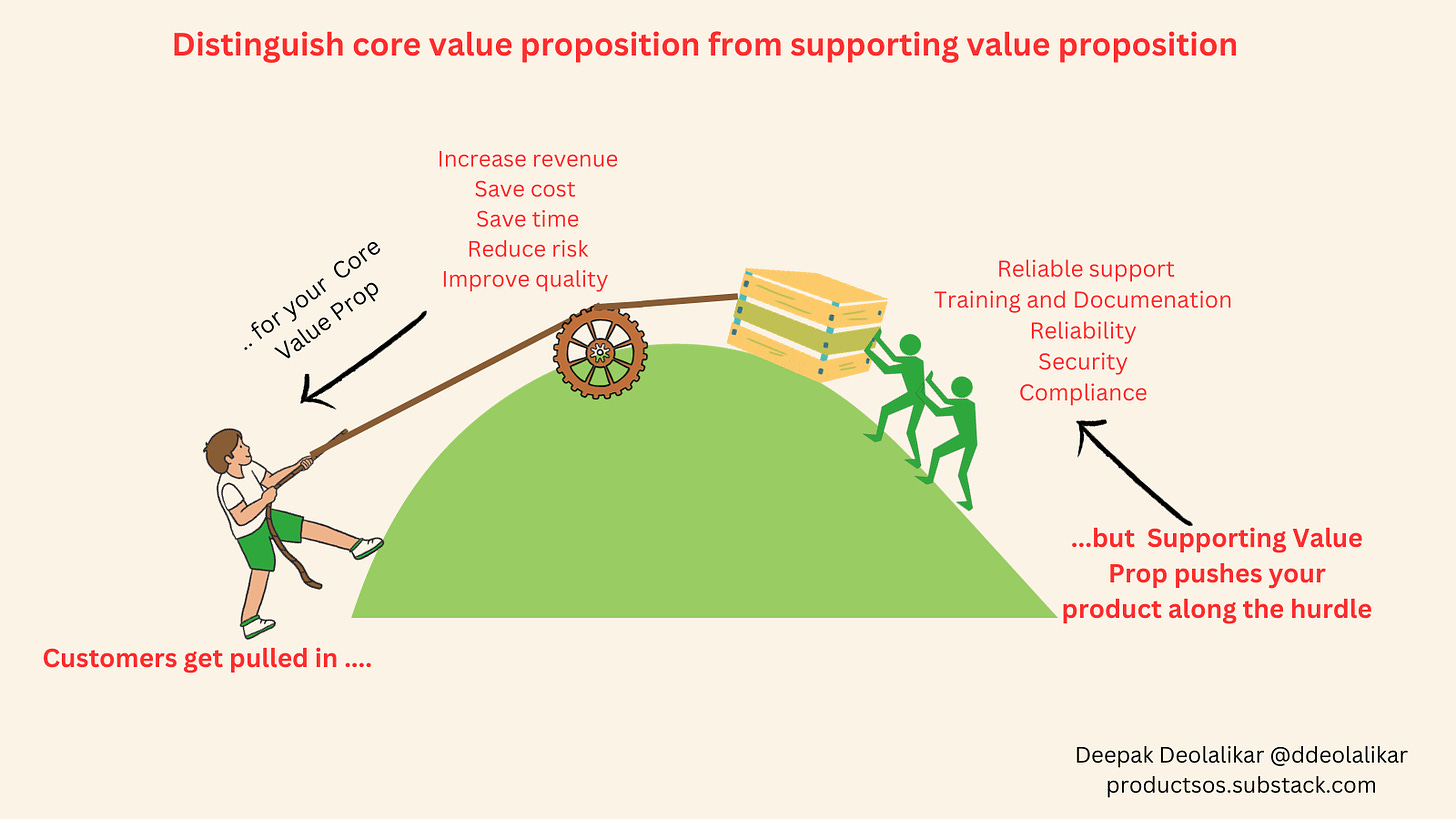Hey PMs
Today we will talk about value propositions. Specifically if you building a new product in an existing company or you are building a product for your startup.
As part of your discovery and validation, you uncovered a significant pain point for a specific segment of customer. You start building out the product and get your early customers to start using.
Now the time comes to extend the product to a larger set of customers with your Ideal Customer Profile (ICP). You lead with the value proposition. However, you now have a large number of value propositions.
Recently, I was working with a founder and we were looking for a differentiated value for the product. We listed all things that a customers find value in the product. We listed out things like improve conversions, saves time etc. But we also listed things like In app support, notifications, compliance, user experience etc.
It was then I realized there are two categories of value propositions.
Core Value Propositions
Supporting Value Propositions
Core Value Propositions
These are core promises your product provides to the customer. This is the value that attracts the customer to your product in the first place. They usually are in the form of -
Save money
Reduce cost
Reduce time
Increase quality
Reduce risk
There might be other variations of the above but essentially, a customer is going to invest time and money on one of the above value props. Nothing else. This is the pull of the customer.
Supporting Value Propositions
There are other value propositions that are necessary but not sufficient on their own. For example, many enterprises want SOC 2 compliance for your software. It’s a good value to protect clients data and it is essential. But this is likely not the reason the customer wants your product. They still are pulled in for the core value proposition. But you need to push the supporting value prop to get the customer across the hurdle.
Customers will base the decision on both types of value propositions. Just having the core value propositions without the supporting value props may push the deal along but for most customers they will want to have the supporting value propositions. These supporting value propositions take the form of :
Reliable support
Training and documentation
Reliability
Security
Compliance
and more
On it’s own, the supporting value prop is not sufficient. For example, you cannot message that you have reliable support 24 x 7. That’s not the only thing your customers want. They want the core value but with good support.
When communicating the value proposition, we lead with the core value proposition. As the discussion progresses, you layer in the supporting value props and make sure the deal is not derailed.
Distinguishing the two categories is important for your messaging and positioning.
I am available for coaching and advisory for B2B product teams and product managers. I can help with transforming your team to be revenue and product centric and help align product strategy with business strategy.
Let’s start with a free 30 min intro call.
Every Tuesday at 10am, I share my B2B experiences. Subscribe now to get it into your mailbox.




